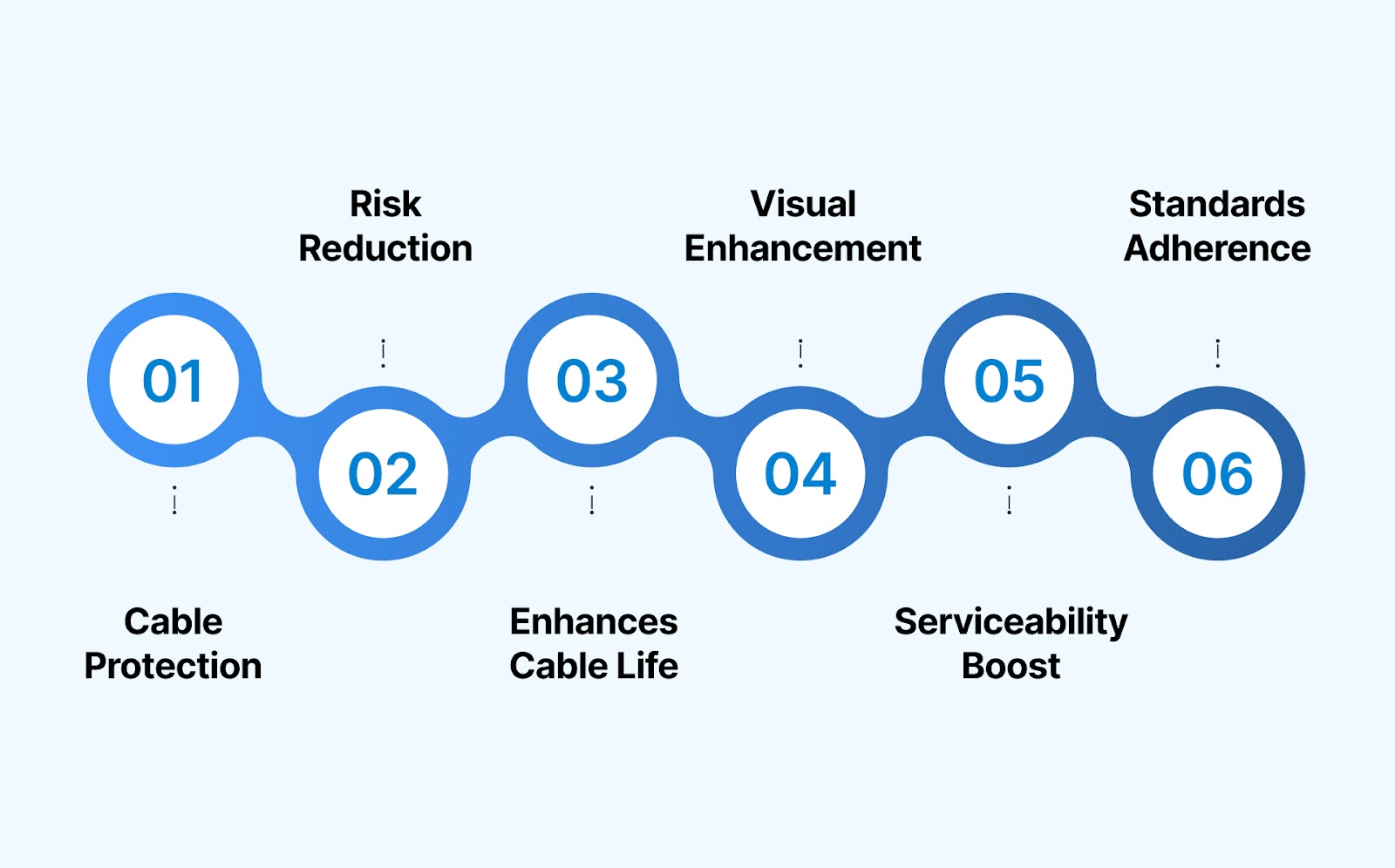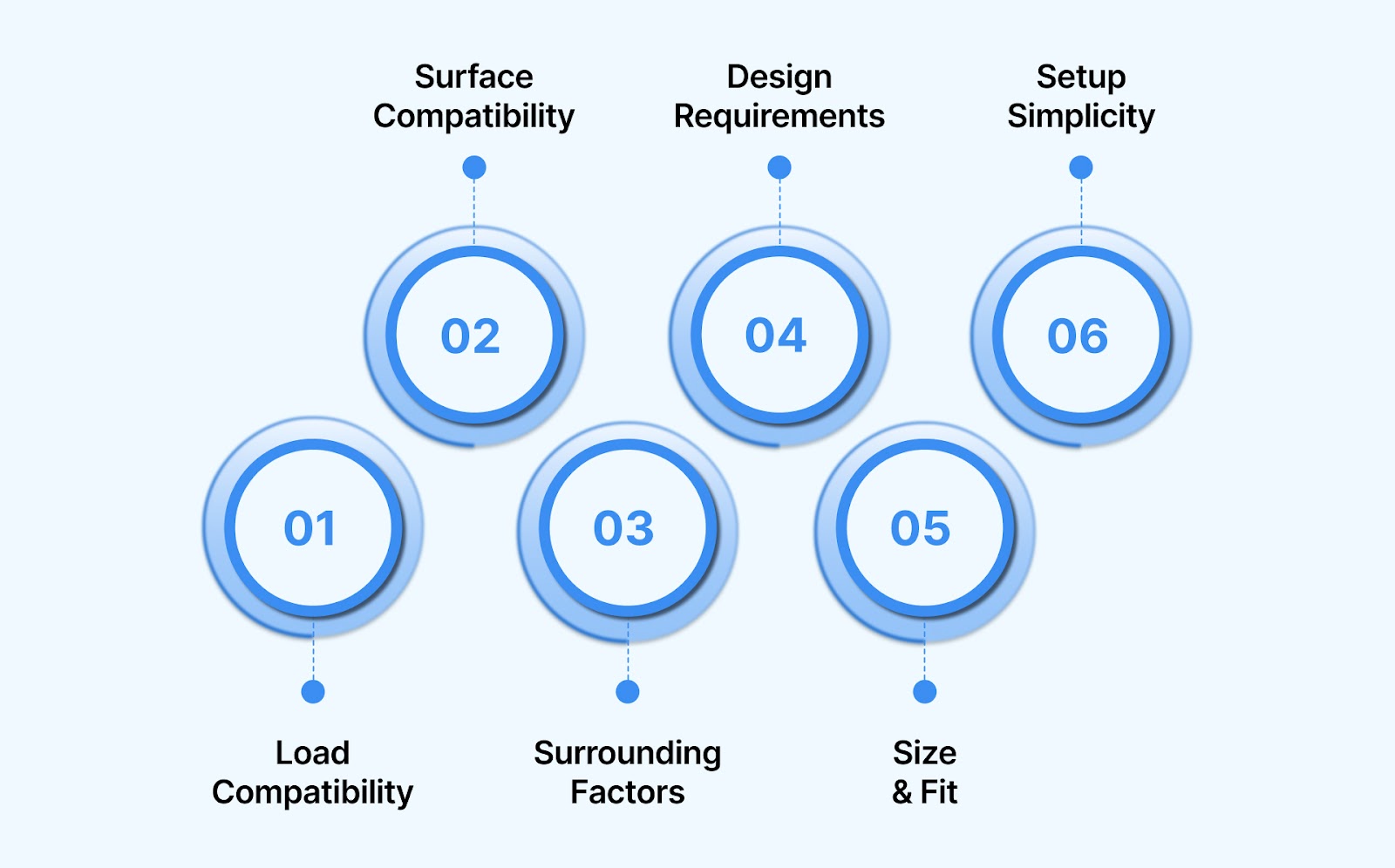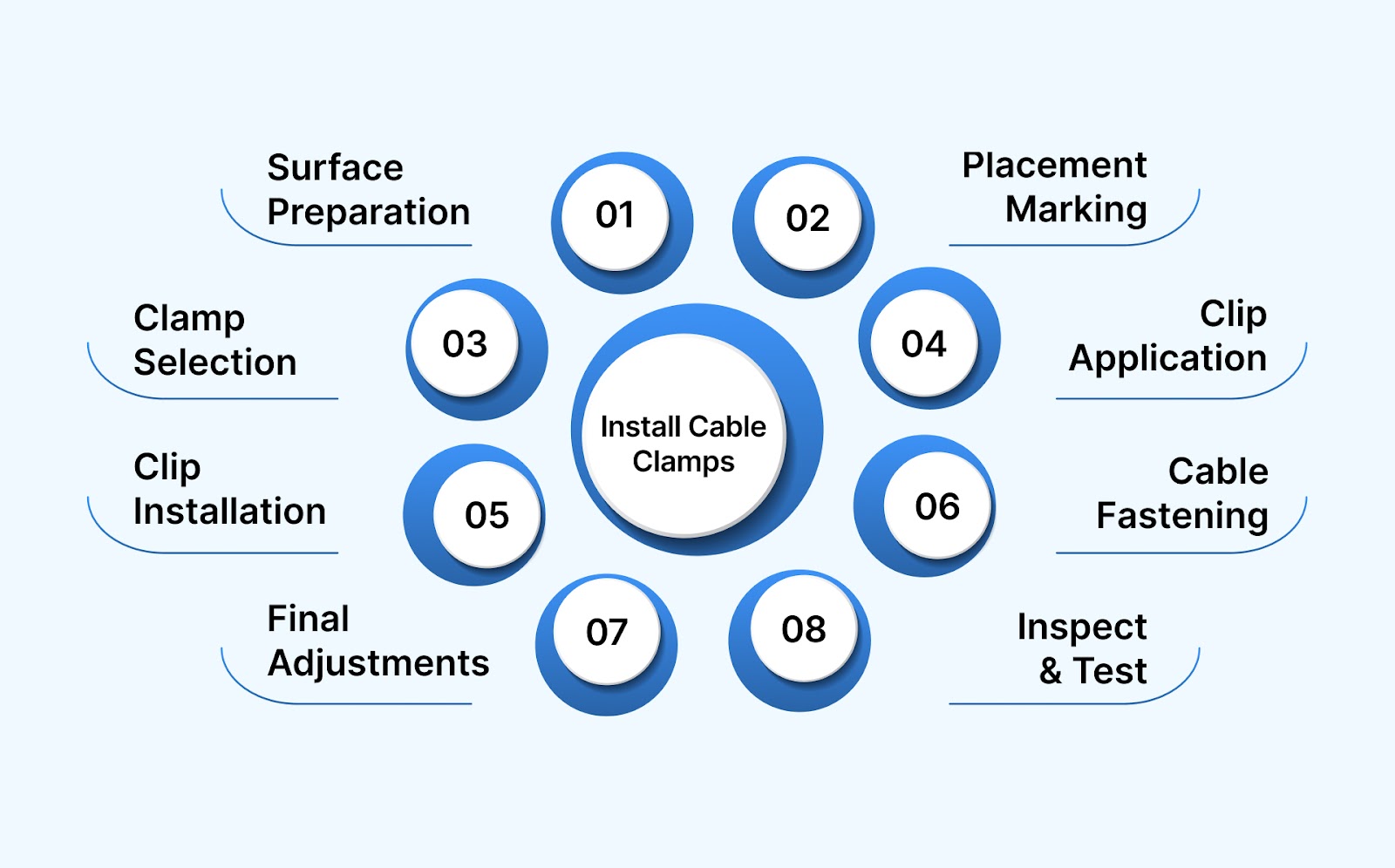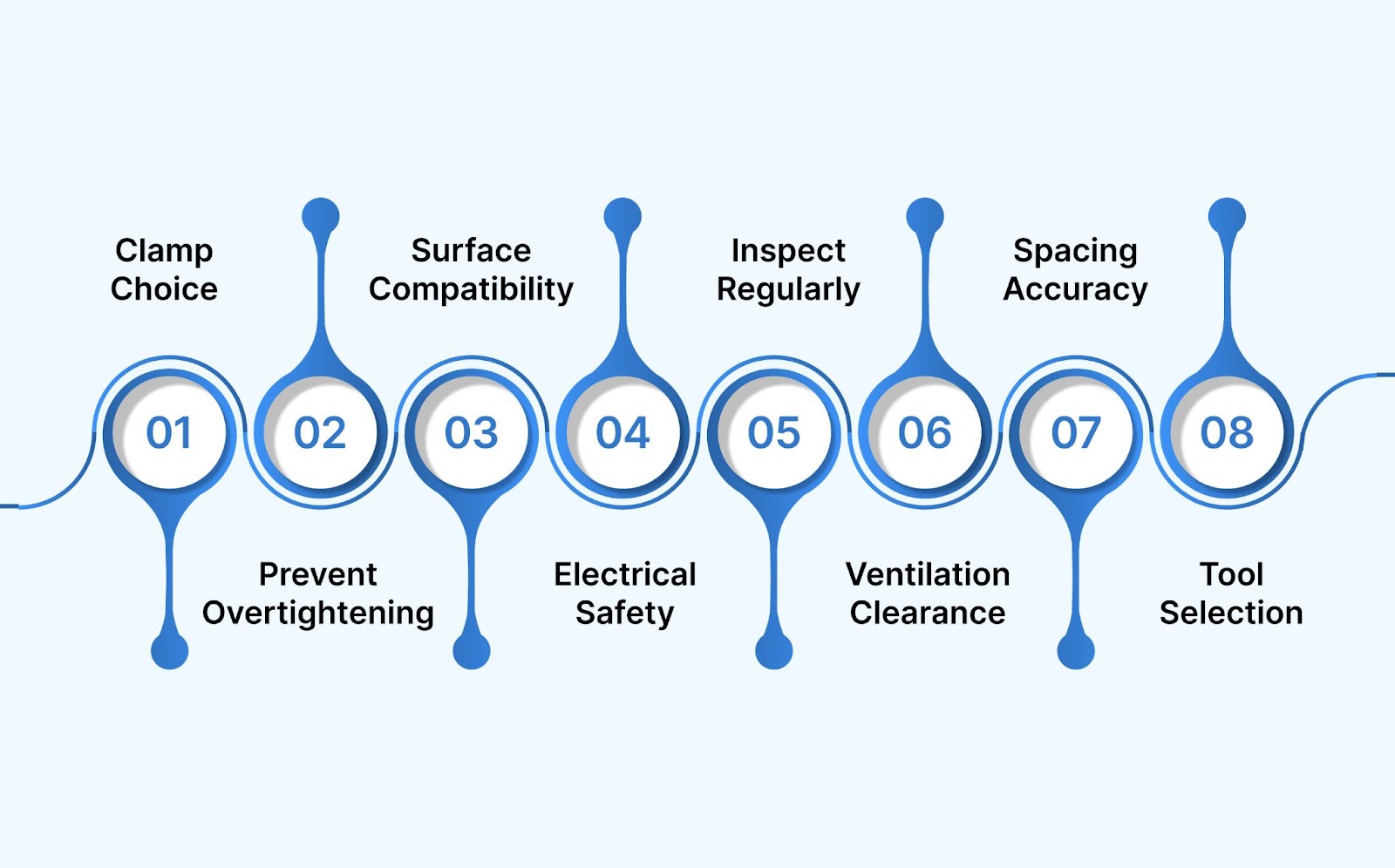How to Choose the Right Cable Clamps for Machine Wiring
August 1, 2025

Are you using the right cable clamps to ensure your machine wiring stays secure and reliable? When it comes to machine wiring, the stability and safety of your cables are non-negotiable.
Without the right cable clamps, your system might face issues like loose wires, short circuits, or even equipment failure, leading to costly downtime. However, the right cable clamp can make all the difference in preventing such problems.
But with so many options available, it can be difficult to know where to start. Are regular clamps sufficient for your application, or do you need a more robust alternative? And how do you know if an adhesive clamp or a screw-based solution best suits your wiring setup?
In this blog, we’ll guide you through the key factors to consider when choosing the right cable clamps for machine wiring. We’ll explore the different types available, their unique features, and how to pick the perfect match for your specific needs to keep your wiring system safe and effective.
What Are Cable Clamps?
Cable clamps are essential tools for managing and securing cables in various applications. Designed to keep wires in place, they prevent tangling, damage, and unnecessary movement, ensuring long-term functionality.
These clamps come in various shapes and materials, such as nylon and metal options, to accommodate different cable types and environments. Whether used in machinery, automotive systems, or electronic setups, cable clamps help maintain the integrity of cables while ensuring safety and organization.
Now that we understand cable clamps, let’s examine why they are so important for machine wiring and how they improve system performance.
Benefits and Importance of Cable Clamps for Machine Wiring

When it comes to machine wiring, securing cables properly is vital for both safety and efficiency. Cable clamps ensure that wires stay in place and extend the cables' lifespan by protecting them from wear and tear.
Here are the benefits and importance of cable clamps for machine wiring:
- Prevents Cable Damage: Securely holds cables, preventing excessive movement and reducing the risk of abrasion or fraying.
- Minimizes Safety Hazards: Organized cables reduce the chance of tripping or accidental disconnections, which could lead to operational failure or injury.
- Enhances Cable Life: Cable clamps help extend the service life of cables by reducing wear from vibration and environmental factors.
- Improves Aesthetic Appeal: Neatly organized cables provide a cleaner, more professional look in machine setups and workspaces.
- Promotes Efficient Maintenance: Properly clamped cables simplify the process of identifying and fixing issues, leading to less downtime and faster repairs.
- Supports Regulatory Compliance: Proper cable management, including the use of clamps, is crucial for meeting safety and operational standards in many industries.
With a clearer picture of the role cable clamps play, let's explore the types of cable clamps suited for machine wiring to see which one best meets your needs.
Also read: How to Use Cable Tie Mounts Guide
Types of Cable Clamps Suitable for Machine Wiring
With so many types of cable clamps available, it's important to choose the one that best fits your specific needs. Each type of clamp serves a unique purpose, from securing cables in tight spaces to handling heavy-duty industrial cables.
Let's explore the different cable clamps suited for machine wiring and their applications and industries to help you make the right choice for your installation needs.
Surelock offers a wide selection of durable, high-performance cable clamps to keep your cables secure and organized in any environment. Explore our range and find the perfect fit for your needs today!
Knowing the types of cable clamps is crucial, but how do you choose the right one for your specific machine wiring requirements? Let’s move on to the key factors that will help you make the best choice.
How to Choose the Right Cable Clips and Clamps

Selecting the right cable clips and clamps is essential to ensuring the safety, stability, and durability of your wiring installations. To make the right choice, consider factors such as the type of cables, the environment, and the specific application of the wiring.
Here are the key factors to guide you in choosing the best cable clips and clamps.
- Cable Type and Load Requirements: Consider the weight and size of the cable bundle. For heavier cables, opt for screw-based clips, while lighter cables may only require self-adhesive clips.
- Surface Compatibility: Ensure the clip or clamp is suitable for the surface you're attaching it to. Some clips are designed for permanent fixtures (nail-in or screw-in), while adhesive clips work better on smooth, clean, and flat surfaces and are ideal for temporary installations.
- Environmental Conditions: Factor in the conditions to which the clip or clamp will be exposed. For outdoor or industrial environments, choose materials that are resistant to UV light, corrosion, or temperature fluctuations.
- Aesthetic and Functional Needs: In settings where appearance matters (like offices or homes), choose clips that blend in with the environment. If the focus is functionality, opt for clips that offer high load-bearing capacity and secure cable management.
- Size and Fit: Measure the diameter of your cable bundle accurately to ensure the clip or clamp fits snugly. A too-tight fit could damage the cables, while a loose fit might not hold them securely.
- Ease of Installation and Maintenance: Adhesive clips are convenient for easier and faster installation. For more permanent installations, clips that require nails or screws offer long-term stability. Ensure that the clamps are easy to adjust or remove if needed.
Choosing the right cable clips and clamps can be tricky, but with Surelock’s range of top-quality products, it doesn’t have to be. From durable Nylon 'P' Clips to versatile Self-Adhesive Cable Clamps, Surelock ensures your cables stay secure and organized. Find the perfect solution for your machine wiring needs with us today!
Choosing the perfect cable clamp is just the beginning. Let’s dive into the step-by-step guide on how to install them properly for optimal performance.
Also read: Cable Tie Sizes and Their Uses
How to Install Cable Clamps Correctly

Proper installation of cable clamps is crucial for ensuring that your wiring system remains secure, efficient, and safe. Whether you're using adhesive-backed, screw-in, or any other types of clamps, following the correct steps will prevent issues like sagging cables, wear, and future damage.
Here's a simple guide on properly installing cable clips and clamps, ensuring maximum functionality and safety.
- Step 1—Surface Preparation: Clean the surface where the cable clamp will be installed. For adhesive-based clamps, use a surface cleaner to remove dust, grease, or dirt, ensuring a strong bond. For screw-based clamps, inspect the surface for debris or imperfections.
- Step 2—Mark the Placement: Mark where the clamps will be installed. Ensure the clips are spaced evenly along the cable path for an even, organized appearance. Use a pencil or marker for accurate placement.
- Step 3—Choosing the Right Clamp: Choose the appropriate clamp based on the surface and cable type. If you're using adhesive clips, ensure they match the cable's weight and size. For screw-in clips, select those designed for permanent attachment.
- Step 4—Applying the Adhesive Clip: Peel the backing off the adhesive strip for adhesive clips. Press the clip firmly against the marked position on the surface, holding it for a few seconds to ensure proper adhesion. Allow the adhesive to set before placing cables in the clamp.
- Step 5—Installing Screw-In or Nail Clips: For screw-in or nail-based clips, align the clip with the marked placement. Pre-drill small pilot holes (if necessary), then secure the clip with screws or nails, ensuring it is firmly anchored without damaging the surface.
- Step 6—Securing the Cable: Place the cable into the clamp or clip, ensuring it is snug but not overly tight. The clip should secure the cable without causing strain or compression, which could damage the wires.
- Step 7—Final Adjustments: Once all clips are in place, double-check the cable positioning. Ensure that the cables are neatly secured with enough slack to avoid tension and prevent future wear. Tighten or reposition clips if needed.
- Step 8—Inspect and Test: After installation, inspect the entire cable path for security and alignment. Test the functionality of the wiring system to ensure everything is working as expected, and make adjustments if necessary.
Now that you’re equipped with the installation process, it’s time to consider safety measures to ensure that your cable clamps are used effectively and securely.
Safety Considerations When Using Cable Clamps

Effectively using cable clamps is essential, but ensuring safety during installation and operation is equally important. Whether you’re securing cables in industrial settings, vehicles, or residential spaces, following proper safety measures prevents accidents and ensures long-term functionality.
Below are key safety considerations when using cable clamps:
- Proper Clamp Selection: Always choose the right clamp for the cable type and application. Ensure the clamp is rated to support the weight and size of the cable bundle to prevent slippage, breakage, or structural failure.
- Avoid Over-tightening: When installing cable clamps, be careful not to over-tighten. Excessive force can damage the cables, cause electrical shorts, or even lead to insulation breakdown, compromising safety.
- Ensure Compatibility with Surfaces: Ensure that the surface where the clamp is mounted is strong enough to support the cables. Use adhesive clips instead of screw-in types to prevent damage to sensitive or delicate surfaces.
- Electrical Safety: When connecting electrical cables, always use clamps rated for electrical insulation. Ensure the clamp material is non-conductive to prevent electrical hazards.
- Inspect Regularly: Regularly inspect installed clamps for signs of wear, corrosion, or damage. A damaged clamp can cause cables to sag, leading to potential electrical or mechanical failures.
- Avoid Blocking Ventilation: When mounting cables, make sure clamps don’t block any ventilation areas. Proper airflow is crucial to prevent overheating, especially in industrial or electronic equipment.
- Check for Correct Spacing: Maintain consistent spacing between clips to avoid stressing cables. Too much space can cause cables to sag, while too little can lead to excessive pressure on the cables, both of which can damage them.
- Use the Right Tools: Use the appropriate tools for installing clamps. For screw-in or nail-based clips, ensure proper drilling and avoid damaging the surface. For adhesive clips, ensure the surface is clean and flat for a strong bond.
By following these safety considerations, you can ensure a secure and hazard-free environment for cable management while maintaining the integrity and reliability of your wiring system.
Conclusion
Choosing the right cable clamps for machine wiring ensures your system's longevity, safety, and functionality. Every detail contributes to a reliable setup, from selecting the appropriate materials and sizes to following proper installation practices. Whether you’re dealing with high-stress industrial environments or sensitive electronic applications, using the right clamps makes all the difference.
For durable, high-quality cable solutions, look no further than Surelock to secure your wiring needs. We offer a wide range of high-quality cable clamps designed to meet your specific needs, from robust Nylon 'P' Clip to durable Self-Adhesive Flat Cable Clamp, and more. These products ensure secure cable management, whether for automotive, industrial, or residential use.
Contact us today to find the perfect solution for your machine wiring needs!



